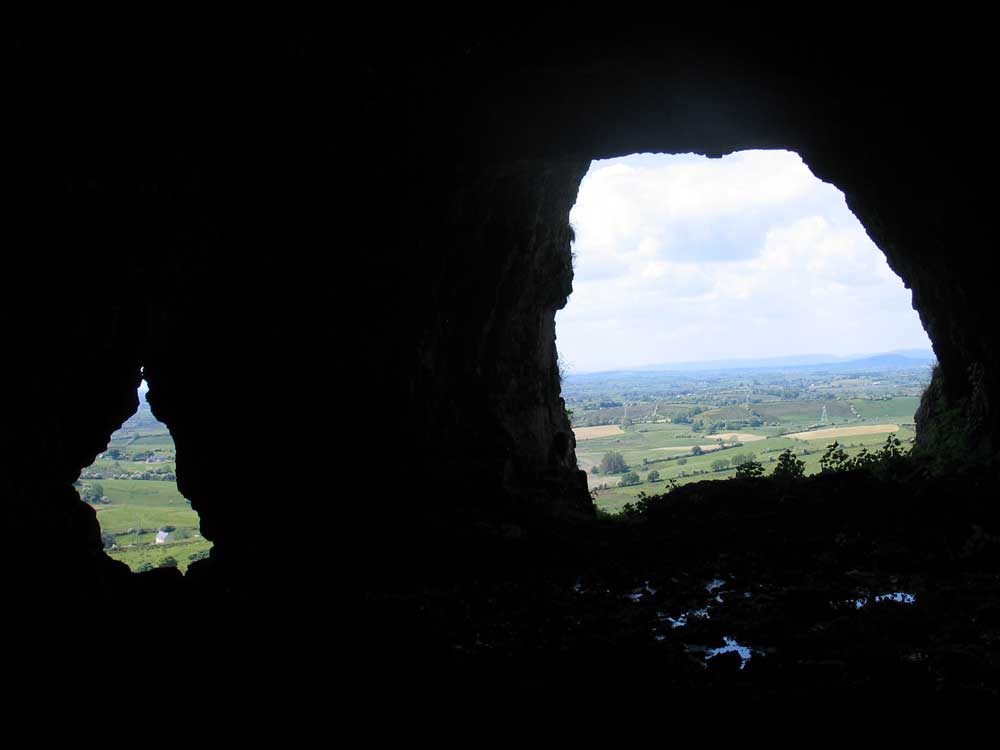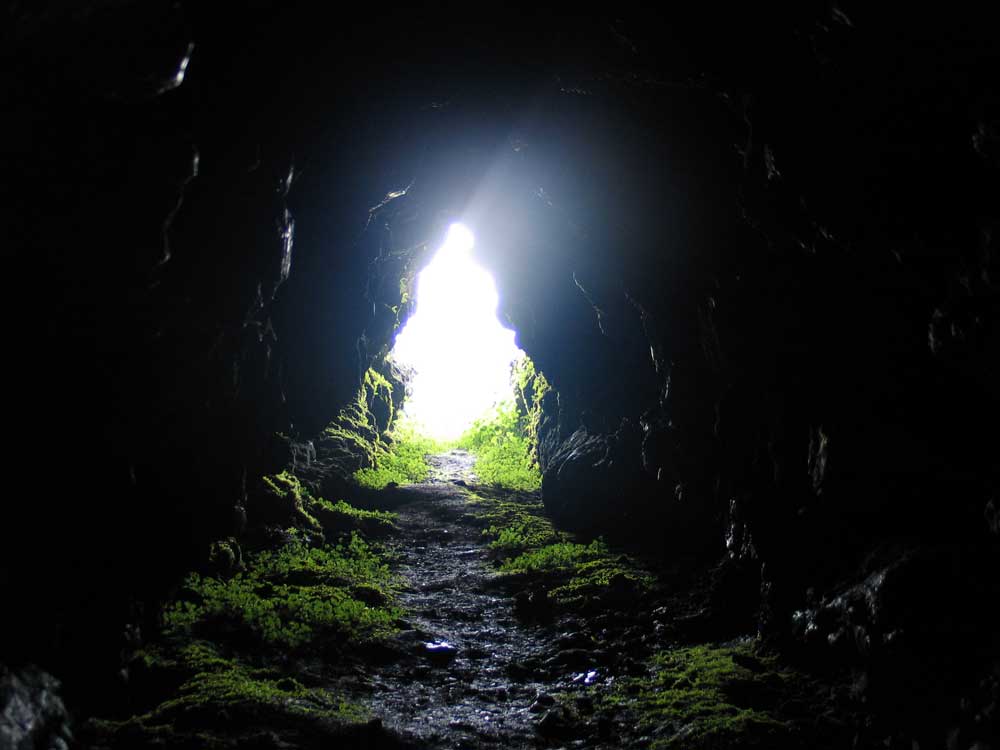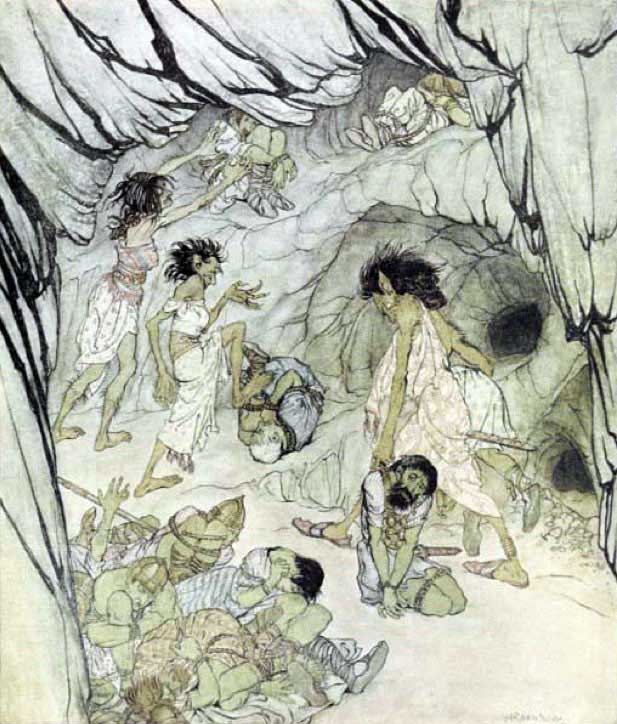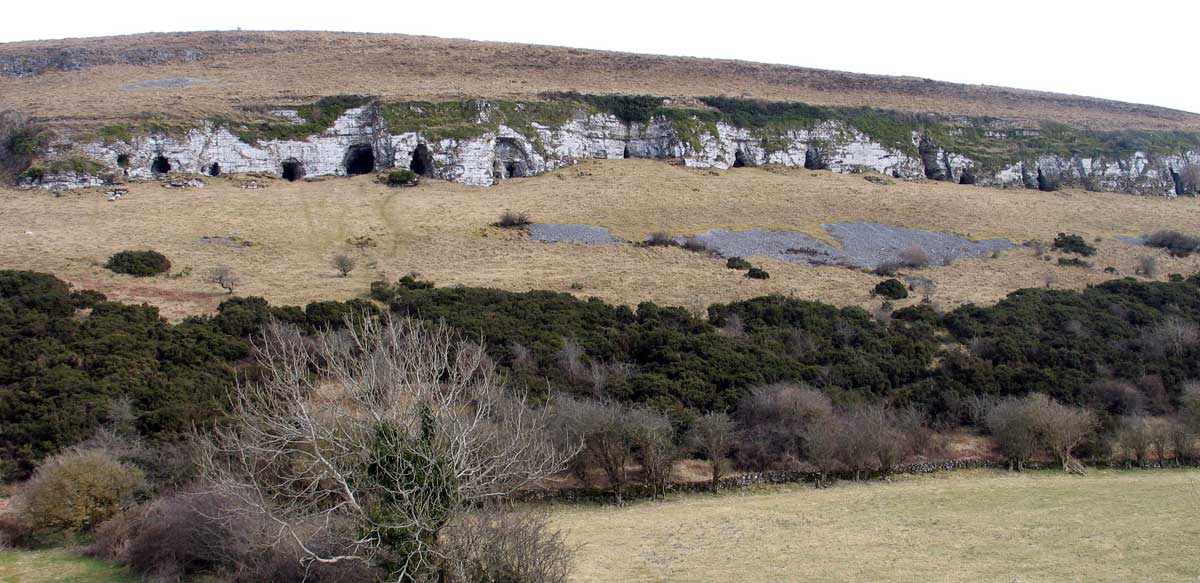The Caves of Kesh Corran.
After that you come to Keash. Keash is a place well written about in ancient manuscripts and in foldlore. Its predominant feature is the line of caves half-way up the mountain, which have the appearance of a sea-side strand with caves opening into the ocean. The shapes would suggest the opposite of the masculine figure to which I have already referred, and would suggest the feminine. However, they were treated in later folklore as representing doorways to the house of Finn MacCumhaill, the leader of the Fianna.
John Garvin, High Hollow Townlands.
The Caves of Kesh Corran may be the most dramatic ancient location in Ireland. The massive limestone Keash Mountain, the western portion of the Bricklieve Mountains, has a horizontal line of cave openings in the cliffs on the south-west flank, which can be seen from many miles away. The Caves of Kesh have long been famous in Irish mythology and folklore, and appear in many ancient stories.
The hill of Keshcorran (1163 feet) forms one of the southern outposts of the limestone region of Sligo and Leitrim. Southward, the Central Plain of Ireland extends unbroken for a hundred miles. Keshcorran is rounded in outline, and its southern slope drops steeply into the plain. About 300 feet above the base of the hill, on the south-western side, a line of low cliffs, some 50 to 100 feet in height, runs along the slope, subtended by a steep talus. Even from a distance of several miles, the black openings of caves may be noted, dotted along the base of the grey limestone cliff. These are the caves which formed the scene of the Committee's labours in 1901. They occupy, as will be seen from the above description, a most commanding position. On a clear day, looking out from their interiors, one encounters a magnificently extensive view—all the lake-dotted fertile plain of southern Sligo, east Mayo and Roscommon, and the Mayo highlands down to Achill, Croagh Patrick, and Maamtrasna, with Lough Mask and Lough Corrib gleaming in the distance. To the cave-diggers, the swift change of view from the dimly-lighted gallleries to the glorious prospect that lay framed by the mouths of the caverns, was a never-ending source of delight.
The Exploration of the Caves of Kesh, County Sligo.
In Ireland, caves occur almost exclusively in limestone, which comprises the geology of approximately 50% of the country. Archaeological material has been recovered from almost 80 caves in Ireland, largely as a result of antiquarian excavations and non-archaeological discoveries (Dowd 2004, 15). Consequently, stratification and contextual information from caves has frequently been poorly recorded.

The archaeological evidence indicates a striking difference between how caves were used in prehistory and in early historic times. From the Mesolithic to the Iron Age, caves were associated with burial, funerary rites and votive deposition. It is not until the early medieval period that there is archaeological evidence to indicate that caves were used for occupation and shelter (Dowd 1997, 100- 20). Several of the caves at Kesh, in South Sligo, were used during the early medieval period for short-term occupation, with activities concentrated at the entrances to the caves.
Now the king of the Shee of Cesh Corran, Conaran, son of Imidel, was also watching the hunt, but Fionn did not see him, for we cannot see the people of Faery until we enter their realm, and Fionn was not thinking of Faery at that moment. Conaran did not like Fionn, and, seeing that the great champion was alone, save for Conan and the two hounds Bran and Sceolan, he thought the time had come to get Fionn into his power. We do not know what Fionn had done to Conaran, but it must have been bad enough, for the king of the Shi' of Cesh Cotran was filled with joy at the sight of Fionn thus close to him, thus unprotected, thus unsuspicious.
A rich body of folklore surrounds the Kesh Caves, in which they are depicted as 'Otherworldly' places and home to supernatural individuals. The first literary reference to the caves is contained in the story 'Cath Maige Mucrama', which relates the birth of Cormac Mac Airt, legendary high-king of Ireland. According to the story, a female wolf kidnapped the infant shortly after his birth and reared him in one of the Kesh Caves. The earliest version of this tale was written in the 9th century (O'Daly 1975, 18), but a more complete form is contained in the 12th-century Book of Leinster (Camey 1968, 148- 61). On the 1838 OS 6-inch map, one cave (Cave P) is annotated Owey Cormac Mac Art.

According to Duanaire Finn, compiled in the early 17th century, the smithy of the supernatural Lon Mac Liomhtha was located in one of the Kesh Caves (Murphy 1933, 9-13). However, the most famous story relating to these caves is 'Bruidhean Cheise Corainn' (the Otherworld Dwelling - Hostel at Kesh Corann).




